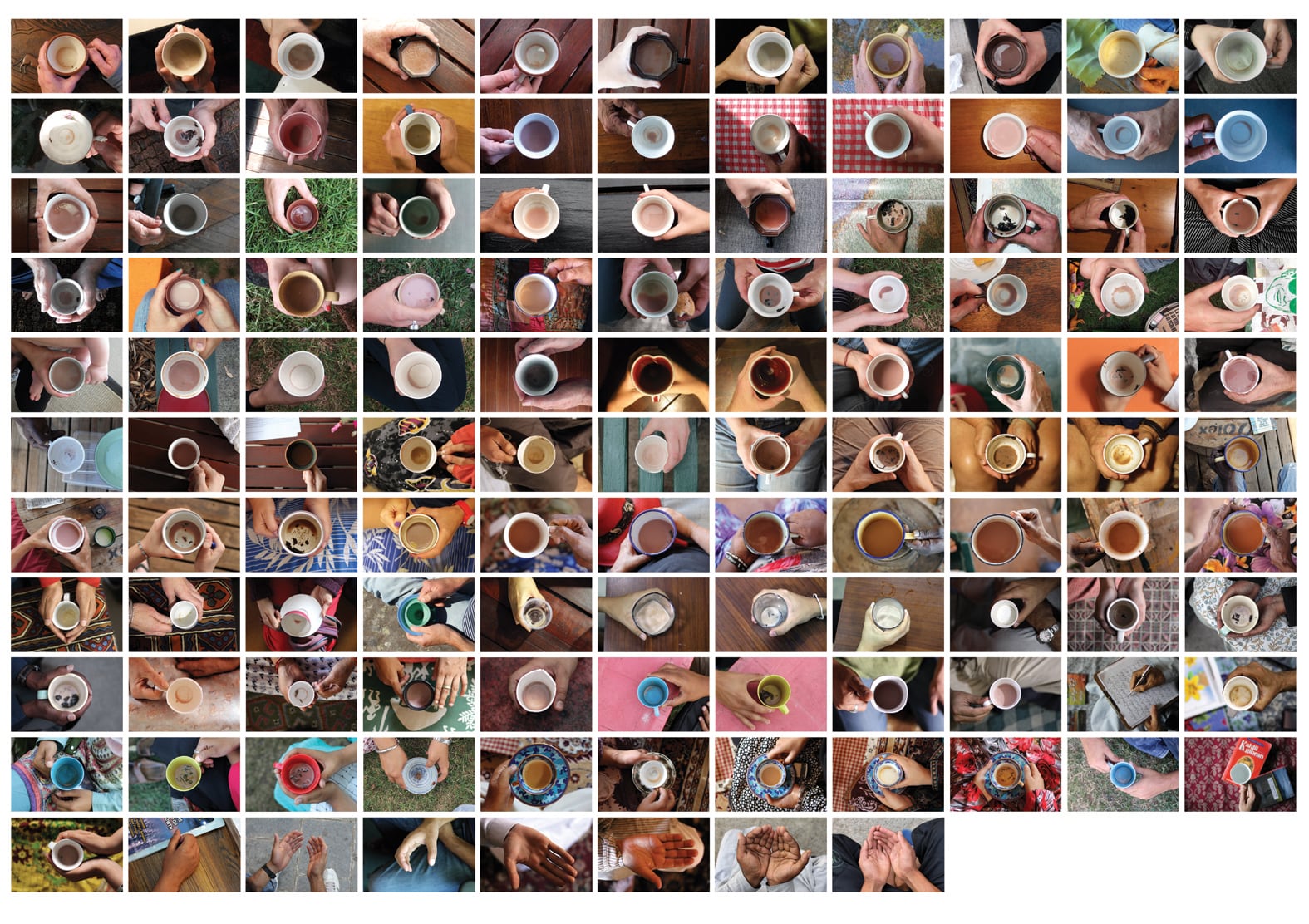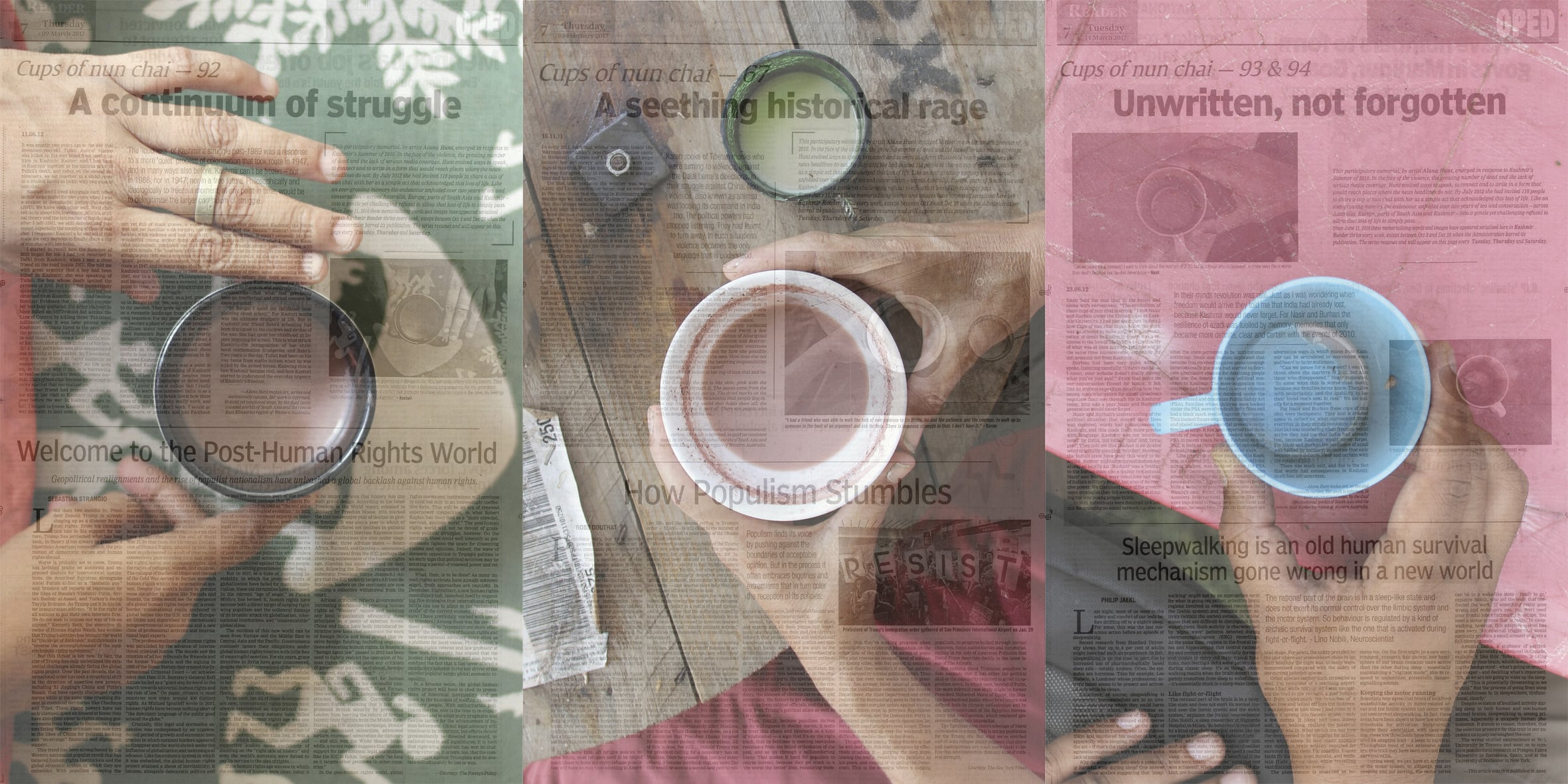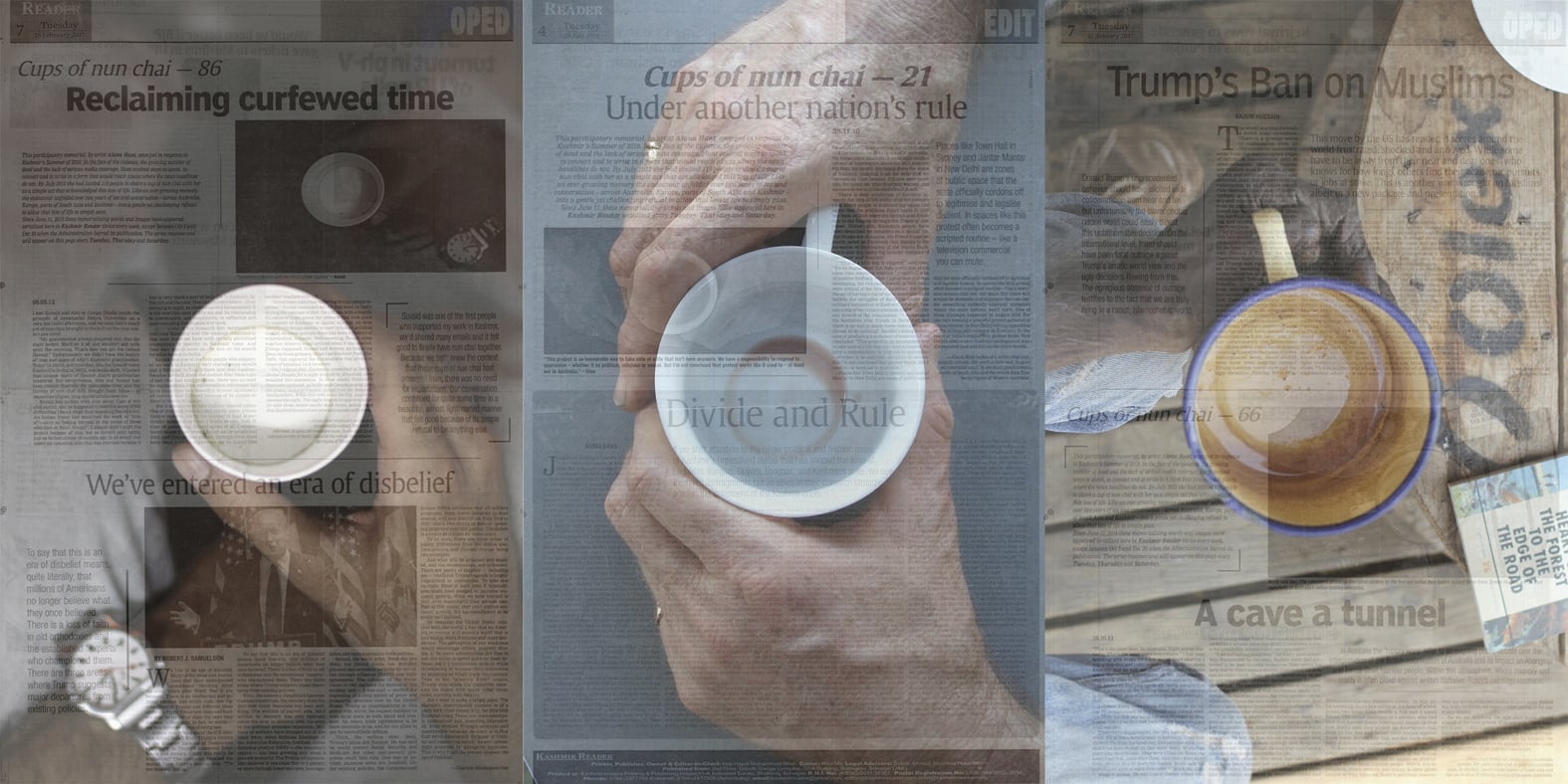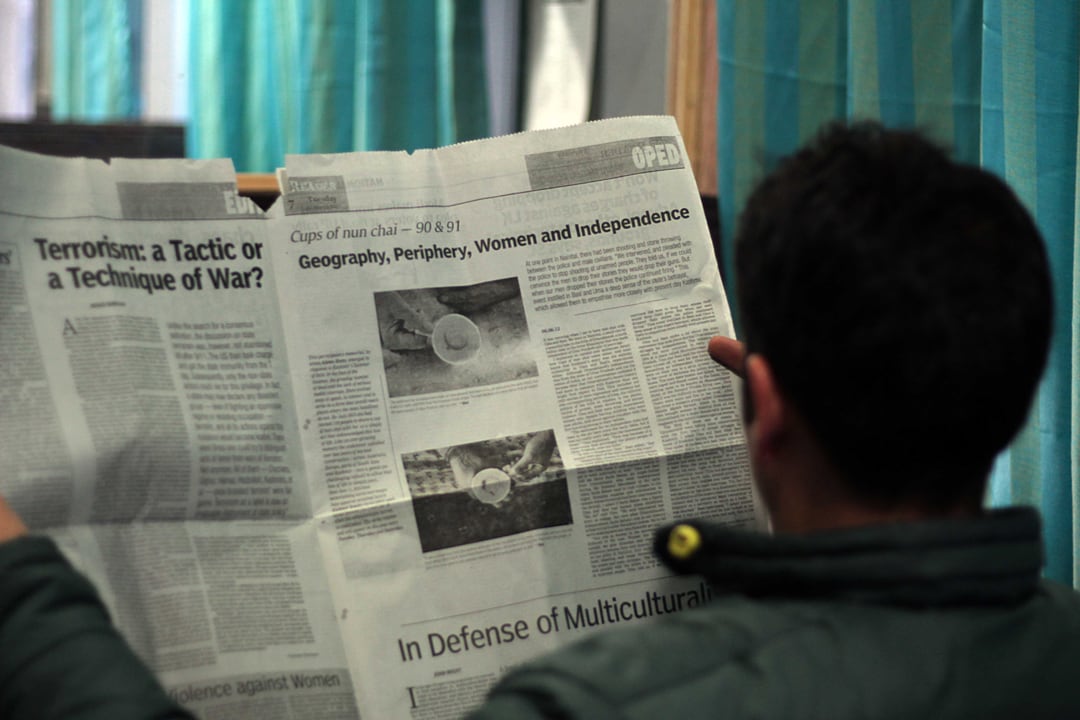




On 14 February 2019, a suicide bomber drove an SUV packed with explosives into a Central Reserve Police Force (CRPF) convoy in the Pulwama district of Jammu and Kashmir, killing forty CRPF troopers in one of the deadliest attacks on India’s armed forces in the past three decades. The Pakistan-based militant group Jaish-e-Mohammed (JeM) took responsibility for the attack. The Pakistani government denied any involvement, but the Indian government vowed vengeance. Over the next few days, an expected series of events unfolded. Kashmiris living in different parts of India were targeted. On 26 February, twelve Mirage 2000 fighter jets of the Indian Air Force (IAF) crossed the Line of Control into Pakistan and bombed the town of Balakot in the Khyber Pakhtunkhwa province. Indian government sources claimed that over 300 militants had been killed at a JeM training camp in Balakot, but independent researchers and journalists visiting the area could find no corroborating evidence for the claim.1 A day later, Pakistan responded with retaliatory airstrikes in Jammu and Kashmir, shooting down an IAF MiG-21and capturing its pilot. The pilot was eventually returned in a gesture of de-escalation. But amid all the sabre-rattling by the two nuclear powers, the frenzied jingoism of news media channels and the clamouring for war that reverberated across Indian towns and cities, what was lost was a Kashmiri narrative of living through these events, a Kashmiri sense that we have been here before, seen this before.
Of course, we would learn that the suicide bomber, a twenty-year old man named Adil Ahmad Dar, was radicalised after being beaten by Indian troops three years ago.2 And of course, the beatings will continue in revenge for the Pulwama attack. Until the next attack. And the next. More generally, we have consistently underestimated how many individuals without a personal history of persecution may nevertheless join the militancy for as long as the larger question of Kashmiri self-determination continues to be denied. But perhaps the most striking feature of modern historical tragedies such as Kashmir is their remarkable predictability. By this I do not mean they can be foreseen, but that once underway they seem to follow distinctively patterned logics. From Palestine to Kashmir, Auschwitz to Bosnia, Shatila to Rwanda, one encounters recurring figures of political violence — the camp, the terrorist, the paramilitary, the mob — and recurring modes of apprehension and representation, such that every atrocity seems reminiscent of another that has gone before. History never repeats itself in identical fashion, yet the present invariably evokes a deeply sedimented archive of modern history. If that’s the case, what critiques of power do we have left that have not already been issued? What idioms of shock and horror do not sound clichéd and worn? Besides accounting for the growing weight of our collective failures, what do we have yet to say?
The Australia-based artist Alana Hunt’s art project Cups of nun chai is part of a growing effort in contemporary art to imagine atrocity differently, not in terms of its most visible and painful registers of violence, but in terms of the forensic traces it leaves behind in the everyday lives of the people who survive. This ‘participatory memorial,’ as Hunt calls it, was inspired by the events of summer 2010 in Kashmir, when 118 civilians were killed and thousands injured by armed forces during protests against India’s military occupation of the state. In commemoration of their deaths, Hunt spent two years sharing 118 cups of nun chai — a deeply boiled green tea with milk and salt popular in Kashmir and the wider Himalayan belt — with 118 people across Australia, Brussels, Bangkok, parts of North India and Kashmir. Each cup sparked a conversation about Kashmir, meticulously reconstructed by Hunt from memory and visualised through the motif of a single austere cup (figure 1). These conversations were later serialised in the newspaper Kashmir Reader over eleven months from 2016 to 2017, during which time the newspaper was banned for three months following the killing of Burhan Wani, the commander of Kashmiri militant group Hizbul Mujahideen. Bound volumes of the newspaper issues, along with digital prints, have been featured in exhibitions of Hunt’s work in various forums around the world.
Hunt toured the United States in Autumn 2018, presenting her work at several universities, including Parsons, Tufts, Indiana and Brown. On 10 November at Brown University, an eager audience of professors and graduate students were treated to cups of nun chai prepared by Hunt prior to the event, followed by a brief overview of the project’s history and circulation. The audience was then invited to read aloud from some of the conversations serialised in the Reader, then the floor was opened up for discussion. I will not dwell on the specificities of the published conversations, but direct the interested reader to the project’s website for a fuller appreciation of the breadth of Hunt’s engagement with her interlocutors and the intersecting histories that make them converge on the events of Kashmir. Instead, I want to offer here a broader meditation inspired by Hunt’s project on the value and challenges of representing atrocity in our contemporary moment.
**
In September 2015 the lifeless body of Aylan Kurdi, a three-year-old Syrian boy, washed up on one of Turkey’s beaches in the Bodrum Peninsula. Like millions of other refugees, Aylan’s family was trying to cross the Mediterranean into Greece, but his overloaded dinghy capsized and Aylan, his brother Galip and their mother drowned. Nilufer Demir’s photograph of Aylan’s body circulated in the mainstream press and quickly went viral on social media. The perfect innocence of this child lying face-down with his eyes closed, his sneakers still clinging to his feet, seemed to emblematise the relentless brutality of the Syrian civil war and the exemplary victimhood of the hundreds of thousands of lives it has claimed.
And yet, as invariably happens with iconic photographs of atrocity, this one evoked and rehearsed the same predictable debates around what constitutes a proper ethical response. Some claimed that it conveyed an essential truth about human vulnerability, others decried the media for its sensationalist exploitation of a gruesome death, while still others pointed to the Eurocentrism latent in sympathising with a European-looking child while countless drowned African children went ignored.3 Yet again, we heard the same litany of hopes about the power of an image to galvanise the international community against the war, and soon after, the sombre realisation that ‘compassion fatigue’ has set in and public sympathy is short-lived after all.4
This conversation about the longue durée of twentieth century tragedy is fixated on what can be called an ‘ontology of presence,’ the courageous yet impossible presumption to re-present a violence that defies language and figuration, that exceeds the thresholds of apprehensibility. Within this mode, every investigation into the event of atrocity is already doomed to discover over and over the limits to its own conditions of possibility. When Adorno famously remarked that ‘to write poetry after Auschwitz is barbaric,’ (1997:34) he was referring precisely to this limit built into language, into culture, into thought itself. We can situate Hunt’s intervention within this semantic failure to represent atrocity. By composing her project as a series of conversations, she eschews the conventional mode of sovereign authorship over representation in which mainstream art is anchored. Further, she refuses to force these conversations to ‘cohere’, relying instead on a narratology of fragmentary and discontinuous experiences separated by time and space, which veer between recollection and testimony, curiosity and condemnation. She allows her respondents to draw on their location as they attempt to relate to Kashmir, producing some fascinating insights on the shared heritage of colonial violence globally, and particularly within South Asia and Australia. The conversations thus do not ‘report’ the tragedy of Kashmir in any objective sense, for as Hunt put it in her discussion at Brown University, ‘statistics do not bleed.’
Perhaps the most striking aspect of Hunt’s project is not its form but its central object: a cup of tea. In an interview with Sanjay Kak, a documentary filmmaker and writer based in New Delhi, Hunt describes the 118 snapshots as symbolic of the ‘nun chai that would not be served inside the homes of those martyrs.’5 Tufail Mattoo is one such instance, a seventeen-year-old boy killed in 2010 when a tear gas canister fired by the police hit him on the head as he was returning from school. Hunt’s conversations must stand where Mattoo once stood and somehow evoke his presence in spectral form. She thus transforms a banal everyday practice into one suffused with memory, loss, anger and politics. Mourning, it is often said, attaches itself to the smallest, most familiar things. The very gentleness of this object — a mere cup of tea — references the violence that suddenly interrupts it. According to the Kashmiri tradition of fatheha-chai (or tchoorim chai in Kashmiri), the family of a person who has died marks the end of their mourning period on the fourth day by serving their neighbours nun chai. Chai thus serves not only as a social practice but a mourning practice, signifying the loss of a shared world that it helped constitute. Nun chai is simultaneously a metaphor of care and of destruction. Hunt’s project is therefore predicated on an ontology of absence, where the meaning of the atrocity is not pre-given but must be attentively discerned in the little gestures. Atrocity here is a forensic trace that registers through absences rather than presences, non-events rather than events. Atrocity is not the Word, but the silence between words.
Yet at the same time, Hunt is also driven by an urge to communicate the atrocity through the very medium most resistant to it: language. She argues in her interview that she ‘wanted to stop these deaths [in Kashmir] being swept under the carpet’ and used her project as ‘an attempt to make Kashmir tangible to others.’6 At another point, she remarks that ‘Kashmir barely figures in the marketplace of global sorrow’ and her intervention is precisely an attempt to bridge that lacuna.7 In other words, even as Hunt seeks to deconstruct linear representations of atrocity as contained in discrete and bounded images of violence, she retains an expositional charge in her work which is committed to social justice and public awareness. Even as the atrocity is displaced, its didactic purpose — perhaps another form of ontological presence — remains. The question then arises: what is the significance of such an exercise? What role does awareness play in the public’s perception of, and indifference towards, atrocity?
In order to explore this question, I turn briefly to another contemporary atrocity: the siege of Aleppo during the Syrian civil war. As the final neighbourhoods in the eastern quarter of the city were falling to the Assad regime’s forces in December 2016, amid contested reports of summary executions and civilian massacres, social media was abuzz with expressions of outrage crying ‘never again.’ Parallels with Bosnia, Rwanda, Halabja and Cambodia were drawn immediately and easily, as survivors from these genocides spoke of a sense of déjà vu.8 The return of history was not without reason, for the phrase ‘never again’ is itself a throwback to the Holocaust, after it was popularised by the filmmaker Erwin Leiser in his 1961 documentary Mein Kampf, and has been used many times since then as a rallying cry to end genocide. 9
And yet, the phrase already implies that the cry goes unheeded, that we must use it ‘again’ because it ‘never’ stops. The phrase is thus bequeathed to us at precisely the moment when the genocide has already taken place. In Syria, the phrase returns to us once again, but this time we witness the atrocity and debate its narratology live on Twitter. The killing fields of Aleppo did not have to be discovered after the fact, nor were they excavated in order to be rehabilitated into the moral edifice of a public archive. We bore witness to them in real time. One could say the same of Kashmir. The grievous injuries caused by armed forces using ‘non-lethal’ lead pellets — while lethal measures continue apace — are incessantly documented by photographers, and many of the photos have been creatively adapted by artists towards a critique of Indian state violence, such as Orijit Sen’s Agony Map of Kashmir (2016).10 Of course, not all atrocities command the same visibility. Middle East crises garner a global attention and investment that is rarely afforded to Kashmir. The point here is that exercises in representation and exposure have been repeated over and over again. In twenty years’ time, as the tweet below said of Aleppo, we might find ourselves memorialising that which could have been prevented today (figure 2). And yet, we continue to recycle the slogans of the twentieth century to frame the twenty-first century’s atrocities. This telescoping of political time represents a particularly contemporary experience of return, one that is already mediated by a sedimented archive of discourse that reappears precisely to mark its own exhaustion.11 ‘Never again’ returns to us this time not as tragedy but as farce; its meaning mutates into new and unanticipated forms as the accumulated weight of the past irrupts into the present.
What then is the expositional value of political art today? Is lack of awareness really the problem? If the age of social networks and digital information has produced nothing more than a global generation of helpless witnesses, perhaps it is time to consider a more difficult possibility: that routine indifference to the suffering of others might not be a function of consciousness, or memory, or any limits to knowledge at all. Instead, our indifference betrays an active disinvestment in the humanity of others. Or put another way, it betrays a motivated investment in the dehumanisation of others, in the dehumanisation of Kashmiris. Hunt’s project humanises Kashmiris, but it is worth asking what brings us to the point where humanisation is necessary to make suffering palpable at all. It is time we shed our innocence. Our shock at the persistence of ‘atavistic’ violence such as Pulwama and Balakot is itself symptomatic of a quintessentially liberal brand of naïveté about the recursivity of violence. The charge of political art must go beyond shedding light on suffering, to interrogate the forms of ethnic, racial and national distance that relegate suffering to the dark only in order to ‘discover’ it anew. Going beyond the language of norms and principles, rights and protections, the task before us is to deconstruct the assumptions undergirding our wish to inform, our ‘hope’ for a brighter, more conscientious, future. Perhaps then we may arrive at a more robust reply to the cynical realist who says, ‘morality is for fools, power speaks only for itself.’
Malay Firoz is a PhD student in the Department of Anthropology and the Department of Modern Culture and Media at Brown University. His research focusses on the politics of humanitarian aid for Syrian refugees in Jordan and Lebanon, specifically addressing a paradigmatic shift in the modalities of aid programming towards a 'resilience-based agenda' comprising community development and local integration.
This piece of writing was produced with the support of the Regional Arts Fund, an Australian Government initiative, administered in Western Australia by Country Arts WA.
